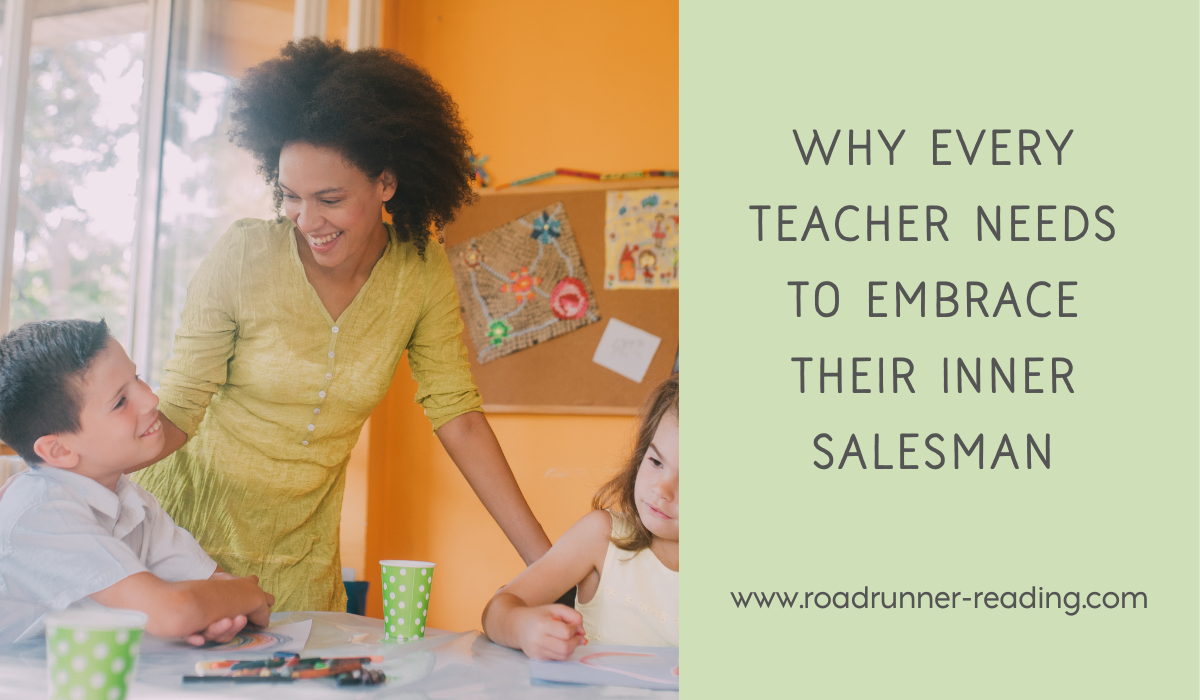
My first job as an adolescent was working retail in my neighborhood mall. I sold jewelry and pierced ears in one of those little kiosks in the center of the mall corridor. That job brought me out of my shell — going from a terribly quiet teen, to a more engaging young adult. I learned a lot about salesmanship in the few years I worked there but even more after years of teaching.
I mostly sold jewelry to people who, based on my judgments, probably shouldn’t be buying this non-essential item. They likely could have used that money to offset household expenses or spent it to pay off debt. Since I didn’t think they needed the product I was to push, it was hard for me to push it.
Now, as a TPT resource-creator who sells reading resources, I have no problem selling what I offer. I believe my products are a solution for teachers or parents looking for educational investments to move their students towards greater literacy.
The same goes for you as a teacher — when you have confidence in the instruction you provide, that gets conveyed to your students. They can trust that you are guiding them on the right path because of your expertise.
When I worked retail as a teen, it amazed me how often my customers would share private things about their lives with me. Here I was, just this high schooler, working in the town mall, and they would share a secret or expose a family dynamic. But, what I am now and what I was then has stayed the same — a good listener. I am genuinely interested in other people’s lives, and when people feel like others care, they’re more willing to “buy” what you’re selling!
This brings me to an essential point — no matter what you do for a living, you are selling something. Yes, that means you, too, teachers!
As teachers, we are selling our instruction. I’m sure you’ve all heard the expression in education of buy-in. We may have the best lesson on planet Earth, but if our students don’t have buy-in, they simply won’t learn that life-changing instruction we know they most desperately need.
We connect, remove obstacles, and show up in a positive way.
Think back on your own school days — who were you more likely to learn from? The teachers who cared about you or those that didn’t? We increase buy-in when we genuinely try to get to know our students. One tip is acknowledging when a student is absent.
I.e. — “Hey Mike, we missed you in class yesterday. I hope everything is okay.”
Sometimes our students don’t know the obstacles in their way to learning. In terms of reading, one such obstacle is having a lack of blending skills. Blending is an absolutely crucial skill to reading fluently. If you need a full-proof tool to help your students blend more effortlessly — check out my Blending Phonics Wheels.
When teachers are stressed, downtrodden, discouraged, or confused, it’s hard for students to “buy-in”. Back in college, I had a professor who would attend class late and lacked effective teaching skills. I learned very little in his class and was resentful of the time (and tuition) he took from me. I didn’t hold back my resentment of this professor, and our relationship was tenuous and strained.
As teachers, we need to be aware of our own mental and physical states for students to be open and attentive to receiving what it is we’re giving — instruction. If you would like some pointers on how to do exactly that — download the free guide — 3 Ways to Quickly Shift from a Negative to a Positive State!
So, to conclude, although you may not think of yourself as being in the “sales” profession, I hope this post showed that embracing your salesmanship can make your teaching much more impactful and your students’ learning experiences much richer!
